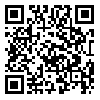Volume 2, Issue 5 (spring & summer- 2005)
2005, 2(5): 85-98 |
Back to browse issues page
Download citation:
BibTeX | RIS | EndNote | Medlars | ProCite | Reference Manager | RefWorks
Send citation to:



BibTeX | RIS | EndNote | Medlars | ProCite | Reference Manager | RefWorks
Send citation to:
Sarli N - Q. Spoken Standard Language versus Written Standard Language. Journal title 2005; 2 (5) :85-98
URL: http://jls.khu.ac.ir/article-1-816-en.html
URL: http://jls.khu.ac.ir/article-1-816-en.html
Teacher Training , sarli@khu.ac.ir
Abstract: (10563 Views)
Unlike general linguistics which, practically speaking, prefers spoken language to written language, in studying the standard language and standardization, priority goes to written language. The logic behind this phenomenon must be found in social, cultural, and technical bases as well as the unique functional and structural characteristics of the written mode. Whereas features of written language contribute to its tendency for standardization, the nature of the spoken language has proved it more standard-resistant, so that some scholars, even, push the argument further denying the existence of any standard spoken language. Nevertheless, the sociolinguists have identified a standard variety for the spoken language but they have hardly suggested any precise definition for it yet. Although, standard spoken language should, by nature, have its own norms and criteria, in practice, the norms and criteria of written language dominate it and the written language functions as a prototype model. It is argued that the narrower the gap between the written and spoken modes in a given language, the higher the standard value of that language would be. The gap between written and spoken language has, at times, resulted in language death.
Type of Study: Research |
References
1. خانلری، پرویز ناتل؛ تاریخ زبان فارسی؛ 3ج، چاپ ششم، تهران: فردوس، 1377.
2. سارلی، ناصرقلی؛ روند معیارسازی زبان فارسی؛ دانشگاه تربیت مدرس، پایاننامه دکتری، 1382.
3. صادقی، علی اشرف؛ «زبان معیار»؛ درباره زبان فارسی؛ زیر نظر نصرالله پورجوادی؛ تهران: مرکز نشر دانشگاهی، 1375.
4. فرشیدورد، خسرو؛ درباره ادبیات و نقد ادبی؛ 2ج، تهران: امیرکبیر، 1363.
5. Fasold, R.; The Sociolinguistic of Society; Oxford: Blackwell, 1984.
6. Ferguson, C.A. (1959); "Diglossia"; Rep in Sociolinguistic Perspectives; ed. by T. Heubner; Oxford: Oxford University Press, 1996.
7. Ferguson, C.A.(1962); "The Language Factor in National Development"; Rep in Sociolinguistic Perspectives; ed. by T. Heubner; Oxford: Oxford University Press, 1996.
8. Haugen, E. (1966); "Dialect, Language, Nation"; Red in Sociolinguistics; ed. by N. Coupland and A. Jaworski; Macmillan Press, 1997.
9. Haugen, E.; "The Scandinavian Languages as Cultural Artifacts"; Language Propblems of Developing Nations; Jhon Wiley and Sons Inc, New York, 1968.
10. Leith, D.; A Social History of English; 2nd edition, London; Routledge, 1997.
11. Lodge, R. A.; French: From Dialect to Standard; Routledge, 1993.
12. Milroy, J. and Milroy, L; Authority in Language; London: Routledge and Kegan Paul, 1985.
13. Stewart, W.A.; "Sociolinguistic Typology for Describing National Multilingualism"; Readings in the Sociology of Language; ed. by J. Fishman; The Hague, Mouton, 1968.
Send email to the article author
| Rights and permissions | |
 | This work is licensed under a Creative Commons Attribution-NonCommercial 4.0 International License. |







